June 12 to June 18
In November 1945, an article appeared in the Shin Sheng Pao (新生報) newspaper written by then-Taipei Mayor Yu Mi-chien (游彌堅) that denounced Japanese culture with rhetoric that aligned with the newly-arrived Chinese Nationalist Party’s (KMT) goal of promoting the use of Mandarin and adoption of Chinese culture.
Note that nuhua (奴化, literally enslavement) was commonly used by the KMT back then to refer to the Japanization of the Taiwanese people, which they hoped to reverse as quickly as possible.
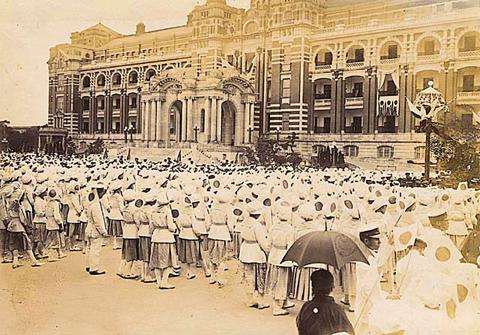
Photo courtesy of Wikimedia Commons
“Under the high-pressure rule of imperialism, Taiwanese have been deeply poisoned by the germs of Fascism over the past 51 years,” Yu wrote. “This poison cannot be eradicated in one day, but where do we begin? How can we reverse our nuhua values to help the new government develop Taiwan?”
DE-JAPANIZATION
On June 16, 1946, the Taiwan Culture Promotion Association (台灣文化協進會) was established with Yu as chairman to “propagate the Three Principles of the People and democracy, transform Taiwanese culture and promote the use of Mandarin.”
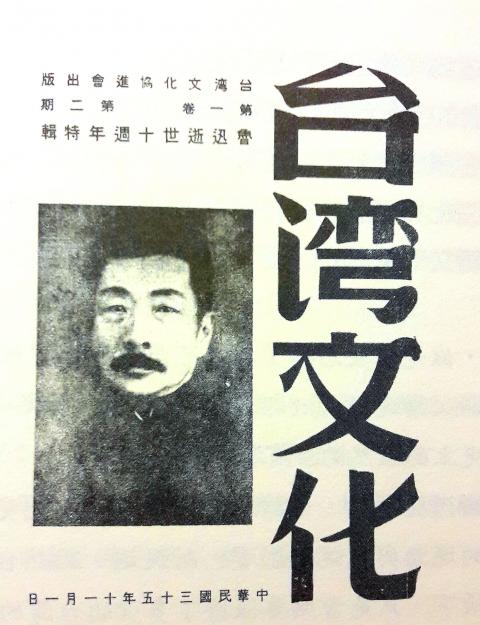
Photo: Han Cheung, Taipei Times
The association targeted almost all facets of culture, from art, music and dance to education and scholarship, vowing to work with Taiwan’s cultural elite to expunge all traces of colonialism.
Plans to eradicate Japanese culture were detailed in March 1945 by future governor-general Chen Yi (陳儀), and carried out immediately after the KMT takeover. He announced at the end of 1945 his wishes of having all teachers and students somewhat proficient in Mandarin with an understanding of Chinese history within one year.
“The Japanese carried out Japanization education, and now we shall counter it by sinicization,” Chen said two months later. The first Mandarin textbook was printed that year, with the first lesson being “We are the youth of China.”
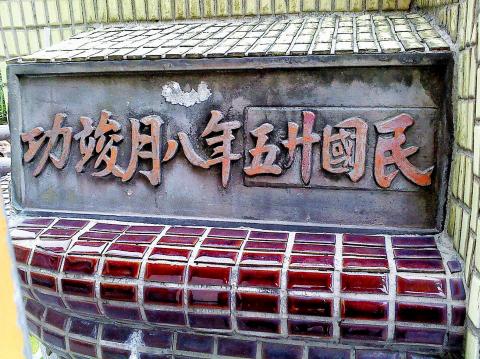
Photo courtesy of Wikimedia Commons
According to Uprooting Japan, Implanting China (去日本化, 再中國化) by Huang Ying-che (黃英哲), at that time more than 70 percent Taiwanese spoke Japanese as their main language, and almost nobody under the age of 30 could read Chinese. Some Mandarin promoters suggested having people revert to Hoklo (also known as Taiwanese) first, then having them learn Mandarin. Ironically, many teachers recruited from China couldn’t even speak Mandarin fluently, and several newspapers wrote editorials criticizing this.
The next step was media control. Huang writes that by the end of 1946, 475,111 books that were positive toward Japan or negative toward the KMT were destroyed, and all Japanese films were banned.
The Taiwan Cultural Promotion Association played an active role over the following two years, organizing seminars and displays of Chinese music, literature and art as well as Taiwanese history. There were also several panel discussions, including one led by Yu that explored how to promote Chinese music to “resolve the unhappiness of Taiwanese who had no songs to sing since Japanese songs were banned.”
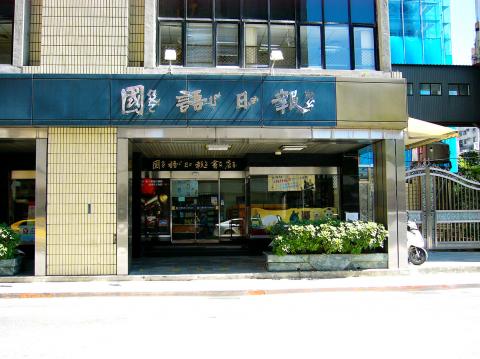
Photo courtesy of Wikimedia Commons
The association even sought to change people’s clothing style, which Huang cites as an example of how ambitious and thorough the association’s plans were. However, its activities were cut short by the 228 Incident as many intellectuals became victims of the White Terror. By the 1950s, the government’s focus had expanded beyond eradicating Japanese culture, seeking to also stamp out Hoklo, Hakka and Aboriginal elements.
THE RISE OF GATCHAMAN
It appears that Japanese culture returned to Taiwan with gusto in the 1970s and 1980s with its popular cartoons and comics, but Huang Chia-wei (黃佳暐) writes in The Acceptance and Rejection of Taiwan for Japanese Culture In Period of Martial Law (戒嚴時期台灣對日本文化的迎與拒) that Japanese culture never truly went away despite the government’s efforts.
First of all, the initial enthusiasm among Taiwanese toward learning Mandarin and Chinese culture quickly faded with their disillusionment with the KMT after the 228 Incident.
“Those who were eager to rid themselves of Japanese colonialism actually reverted to their old way of life,” he writes. “On the surface, they submitted to the KMT’s policies, but in their private life, whether intentionally or not, they retained many of their colonial ways.”
Huang writes that Japanese entertainment continued to enter Taiwan during the 1950s, although in de-Japanized form. For example, the authors’ names would be changed to Chinese, and even comic book characters who wore Japanese traditional clothing were redrawn with Western suits and dress. It was the same with music, giving rise to Japanese tunes with Taiwanese lyrics attributed to fictional composers with Chinese names.
As the economy improved in the 1970s, Taiwanese consumers were no longer satisfied by local leisure products, turning toward Japan since the country’s products and culture were already familiar in Taiwan. Huang writes that that generation was conflicted because, on the one hand, they learned about Japanese atrocities in school, but often had parents who preferred to speak Japanese. This led to a mental separation of Japanese culture and Japanese history, making it mentally acceptable to “hate Japanese people but love Japanese comics.”
Although the KMT re-upped its anti-Japanese rhetoric after Japan cut ties with them in favor of China in 1972, it couldn’t stop television channels from showing Japanese cartoons, although they were also de-Japanized through meticulous editing.
When China Television Company debuted Gatchaman in December 1977 causing a huge craze among children, there was no going back. Japanese pop culture was here to stay.
Taiwan in Time, a column about Taiwan’s history that is published every Sunday, spotlights important or interesting events around the nation that have anniversaries this week.

Most heroes are remembered for the battles they fought. Taiwan’s Black Bat Squadron is remembered for flying into Chinese airspace 838 times between 1953 and 1967, and for the 148 men whose sacrifice bought the intelligence that kept Taiwan secure. Two-thirds of the squadron died carrying out missions most people wouldn’t learn about for another 40 years. The squadron lost 15 aircraft and 148 crew members over those 14 years, making it the deadliest unit in Taiwan’s military history by casualty rate. They flew at night, often at low altitudes, straight into some of the most heavily defended airspace in Asia.

Beijing’s ironic, abusive tantrums aimed at Japan since Japanese Prime Minister Sanae Takaichi publicly stated that a Taiwan contingency would be an existential crisis for Japan, have revealed for all the world to see that the People’s Republic of China (PRC) lusts after Okinawa. We all owe Takaichi a debt of thanks for getting the PRC to make that public. The PRC and its netizens, taking their cue from the Chinese Communist Party (CCP), are presenting Okinawa by mirroring the claims about Taiwan. Official PRC propaganda organs began to wax lyrical about Okinawa’s “unsettled status” beginning last month. A Global

Taiwan’s democracy is at risk. Be very alarmed. This is not a drill. The current constitutional crisis progressed slowly, then suddenly. Political tensions, partisan hostility and emotions are all running high right when cool heads and calm negotiation are most needed. Oxford defines brinkmanship as: “The art or practice of pursuing a dangerous policy to the limits of safety before stopping, especially in politics.” It says the term comes from a quote from a 1956 Cold War interview with then-American Secretary of State John Foster Dulles, when he said: ‘The ability to get to the verge without getting into the war is
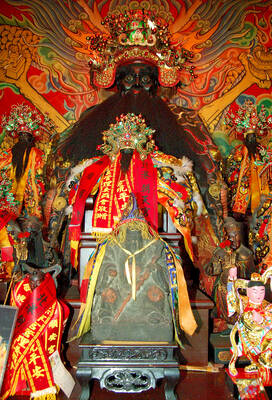
Dec. 22 to Dec. 28 About 200 years ago, a Taoist statue drifted down the Guizikeng River (貴子坑) and was retrieved by a resident of the Indigenous settlement of Kipatauw. Decades later, in the late 1800s, it’s said that a descendant of the original caretaker suddenly entered into a trance and identified the statue as a Wangye (Royal Lord) deity surnamed Chi (池府王爺). Lord Chi is widely revered across Taiwan for his healing powers, and following this revelation, some members of the Pan (潘) family began worshipping the deity. The century that followed was marked by repeated forced displacement and marginalization of